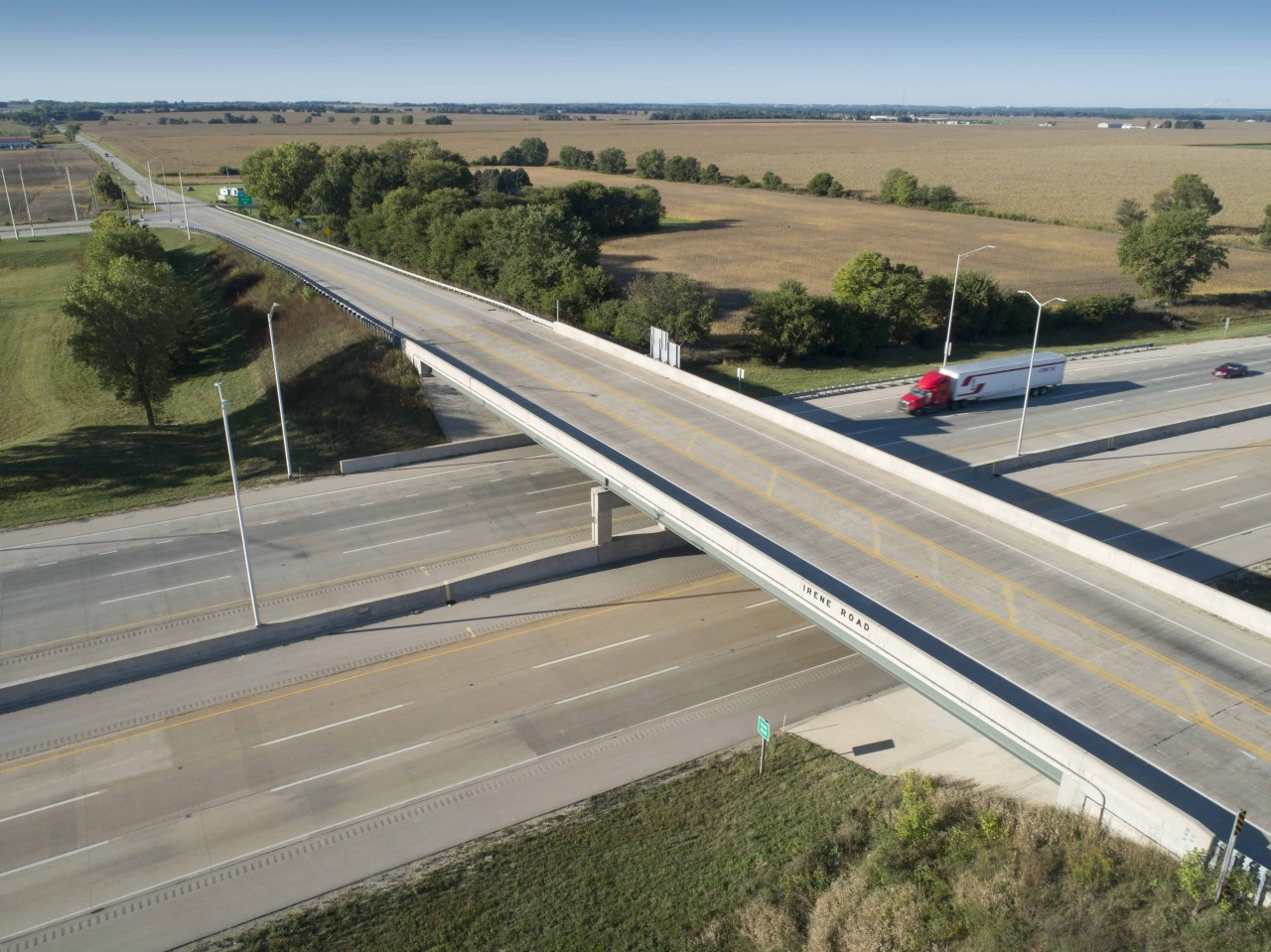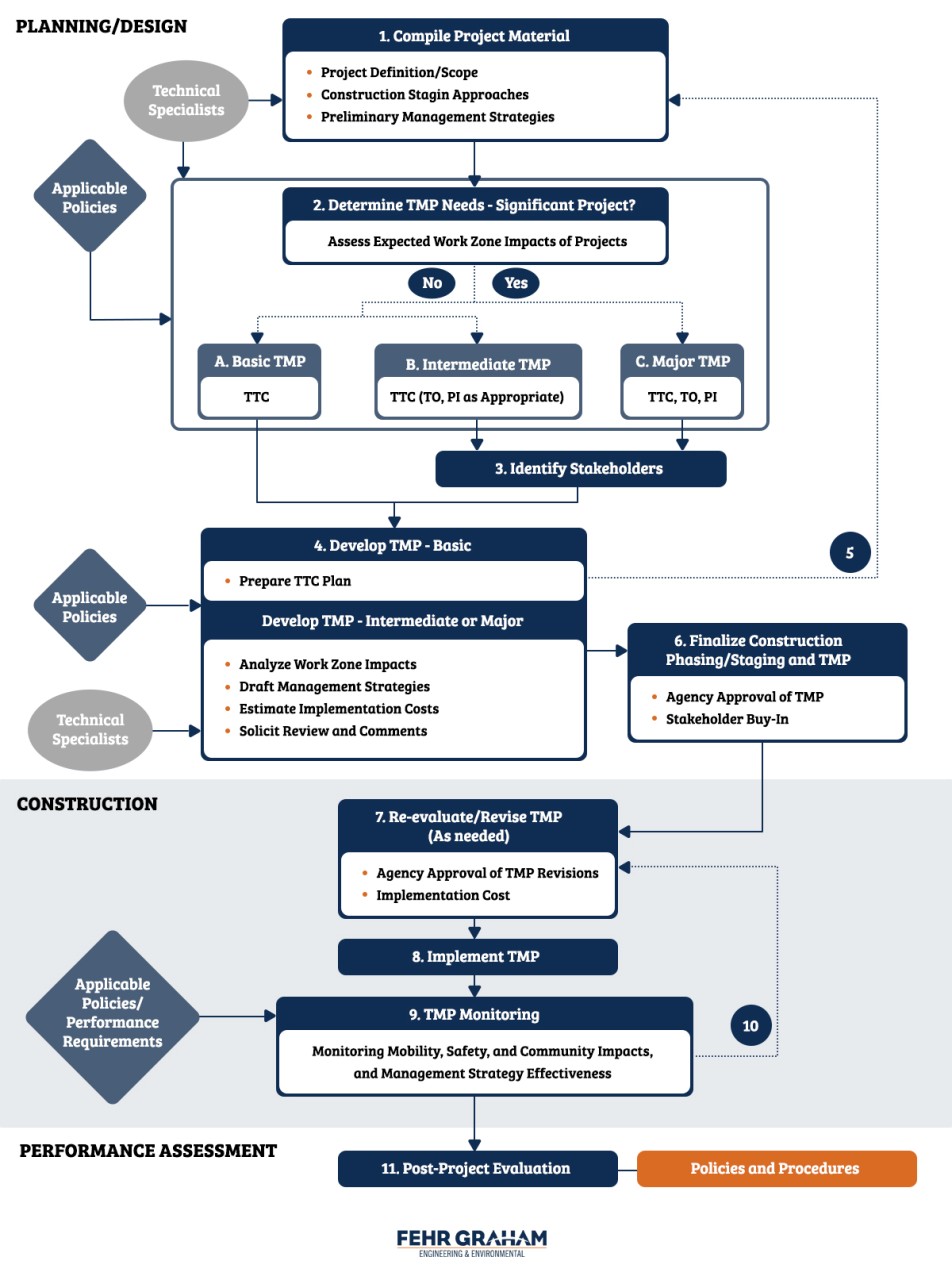Designing traffic control plans to keep growing communities safe
Construction on roads and highways disrupts traffic flow and poses potential safety hazards for workers, pedestrians and motorists. A traffic control plan or TCP offers a detailed outline to manage traffic in and around construction or roadwork sites. Essential purposes of a traffic control plan are:
- Maintenance-of-traffic issues. A traffic control plan establishes temporary conditions to keep the travel ways and paths safe during road construction, repair and maintenance.
- Minimize traffic disruptions. A traffic control plan aims to minimize inconveniences, such as increased travel times and delays because of congestion caused by construction operations.
- Eliminate safety hazards. A traffic control plan ensures the safe and efficient flow of traffic and eliminates safety hazards for motorists, pedestrians and workers.
An effective traffic control plan helps accomplish better traffic performance from the infrastructure. In addition to ensuring safety and minimizing congestion, a traffic control plan also provides economic and environmental benefits to communities by increasing employment, income growth and energy conservation.
It is worth noting that typical traffic control plans are usually generic and may not be intended to satisfy all work zone conditions. These plans serve more as guides and need to be customized and modified based on local roadway configurations/conditions, work zone policies, etc.
Developing traffic control plans
A traffic control plan involves a wide range of elements such as traffic control strategies, construction staging requirements, specifications for traffic control devices and others. Depending on the complexity of the project scope, a traffic control plan may involve multiple shifts in traffic, temporary pedestrian-accessible routes and full or partial closure of vehicle, bicycle and pedestrian lanes where a detour is needed. Developing a traffic control plan is influenced by several factors, including:
- Traffic data. The traffic volume, traffic flow, truck percentages, crash history and problem areas within the project limits.
- Roadway characteristics. Pavement types and conditions, number of lanes, lane and shoulder widths, horizontal and vertical alignments, surrounding terrain and local environment (urban, rural, commercial, residential, etc.).
- Traffic control and safety accessories. Traffic control devices, including signs, structures, roadside barriers, traffic signals, lighting and pavement markings.
- Construction details. Project duration, available right of way, work area separation from traffic, number of accesses adjacent to work areas, excavation locations, etc.
One of the major challenges in laying out a traffic control plan is designing without early and sufficient input of traffic and construction expertise during construction planning. Developing a traffic control plan should start at the beginning of a transportation engineering project and progress through the preliminary design phase. The development process is iterative and evolves with the project design. As the traffic control plan evolves, it is critical to reassess traffic control strategies and confirm that work zone impacts are properly addressed while the required budget for the project is still available.
The following table highlights some key stages of designing a traffic control plan.
Developing a traffic control plan requires technical expertise and adequate funds. That is why you need a team of transportation engineers to develop custom traffic control plans for your community.
Designing a traffic control plan with the help of an expert
At Fehr Graham, we have helped communities navigate transportation projects — from complex interchanges to multilane roadways to bridges and recreational paths. Our licensed engineers and experienced team help design custom traffic control plans to reduce traffic congestion and delays and make travel safer. We have successfully delivered transportation engineering projects that have received accolades for excellence.
Our past projects reflect our expertise and experience as transportation engineers. We have been part of several distinguished projects, including the widening and reconstruction of the Jane Addams Memorial Tollway in Illinois. Under the Move Illinois program, we worked as a consultant, completing the reconstruction of I-90 from Rockford to Chicago to reduce congestion and pollution. We worked on this Joint Venture project — from developing traffic control plans, contract plans, specifications and cost estimates to obtaining permits, completing topographical surveys and preparing signal designs. The project was awarded an Engineering Excellence Honor Award.
We are committed to enhancing the quality of life across communities by strengthening transportation infrastructure. We also help communities secure adequate funding for transportation engineering projects while preserving the visual, cultural and historical elements of local transportation networks.To learn more about how Fehr Graham can help design a traffic control plan for your community, contact us or give us a call at 815.562.9087.
 |
As the firm’s Lead Transportation Engineer, Fehr Graham Principal Noah Carmichael, PE, leads notable, complex and high-profile transportation infrastructure engineering projects. He works closely with municipal and governmental partners on public infrastructure planning and identifies funding opportunities to support community capital investment goals. Reach him at |
Collaborative, Insightful, Results-Driven Solutions
Fehr Graham provides innovative engineering and environmental solutions to help improve the lives and communities of our customers.


